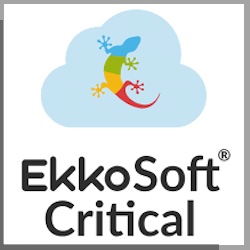Attending school in the 1970s and 1980s, politicians were fond of claiming that my education would be better if teachers spent more time on the three Rs of reading, writing, and arithmetic (sic). The circular economy, too, is often described using words beginning with the letter R, from the snappy reduce, reuse, and recycle, to longer lists of 12 terms or more. These lists (mostly) use words beginning with R, but often focus on a particular audience, use case, or industry. Discussion of organic matter’s place in circular economies for agriculture, forestry, or food, for example, might include one of regenerate, replant, or rot. Rotting is an important natural process, but it’s not particularly relevant to our clients in the manufacturing sector with whom I spend most of my time.
My new report, Embrace The Circular Economy To Make Manufacturing More Sustainable, describes five Rs which do matter to manufacturers: reduce, reuse, repair, refurbish, and recycle. Alternative 5-R lists are readily available from your favourite internet search engine or genAI chatbot, but this set of five is useful in framing Forrester’s advice to business and technology leaders in the manufacturing sector. We argue that they should:
- Reduce consumption of finite resources. The greenest resource is the resource that isn’t consumed in the first place. Refuse to buy stuff you don’t need, rethink ownership and usage of machines to maximize their productivity, and redesign products to consume fewer — and greener — resources during their manufacture and use.
- Reuse manufactured goods again and again. Design and make products that encourage longer-term use and reuse. Explore the feasibility of shifting to an equipment-as-a-service business model, which helps to maximize utilization of resource-hungry machinery. Where possible, regift or resell goods that are no longer needed instead of discarding them. Keep manufactured goods as high on the value hill as possible, for as long as possible.
- Repair broken products instead of replacing them. Design products that are easy to repair, with user-serviceable components and readily available spare parts. Anticipate and embrace “right to repair” legislation in the key markets in which you operate.
- Refurbish products at the end of their first life to begin a productive second life. Design products that are easier to refurbish, with modular designs to simplify the replacement of worn or obsolete parts. Explore the feasibility of refurbishing or remanufacturing returned products for resale as warranty-backed refurbished items.
- Recycle products when they are no longer useful, recovering material for new products. Design products that are easy to recycle at the very end of their useful lives, documenting the grade, nature, and source of their constituent materials and making it straightforward to separate and recover those materials for use in entirely new products.
I’ll be discussing this research in more detail in a client webinar on September 9. As always, if you have your own perspectives to share, please schedule a briefing and tell me all about them. If you’re a Forrester client and want to discuss (or challenge) my thinking on this topic, please schedule an inquiry.
Author Paul Miller is VP and principal analyst at Forrester Research. Related: Read more Forrester guest blogs.




